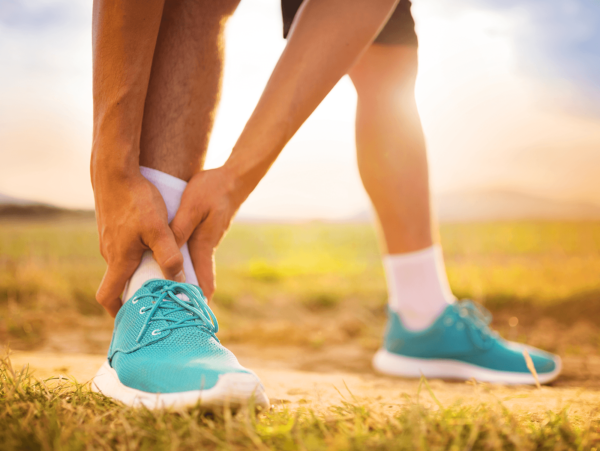Ankle Pain
At Walking Mobility foot and ankle clinics, we see many causes of ankle pain, both in adults and in children. From injuries and “growing pains” in kids to more chronic conditions, we treat them all.
See below for more information on some of the more common conditions that we see.

Here are some conditions we can help you with.
Ankle Sprains
Ankle Sprains
This is one of the most common orthopaedic injuries and causes of ankle pain. Although it is a common sports injury, it can happen to anyone, at any time, during even everyday activities. An ankle sprain is actually an injury to one or more of the “ligaments” that hold the bones of the ankle together. These ligaments have the ability to stretch slightly, however when a more severe force is put upon them from a twist, bend or turn, they are pushed beyond their normal limits and are injured. A sprain can vary greatly in its severity, anywhere from a mild “pull” to a complete rupture of the ligament off the bone. Inversion sprains (“rolling your ankle”) are far more common than eversion sprains (when your ankle rolls in and your foot twists out). Typical treatment includes: RICE (rest, ice, compression, elevation), over-the-counter or doctor prescribed anti-inflammatory medication and ankle supports. You should see a doctor if the pain is severe and you are not able to walk more than a few steps and/or the pain is not subsiding after one week.
Tendonitis
Tendonitis:
On the of the more common things that we deal with in our clinics are various forms of tendonitis around the ankle. This is condition causes is inflammation of the tendon itself or the tendon sheath that protects it (tenosynovitis). It can affect both the inside (medial) part or the outside (lateral) aspect of the ankle.
Contrary to what many people believe, you don’t have to be an athlete to develop tendonitis. While, yes, in some cases, it develops as a result of “overuse” in runners and other athletes, just as often it is caused by “overload” of the tendon. This means that due to various reasons (eg. overpronation, oversupination), the tendon has become “overloaded” and is starting to let you know that it is NOT HAPPY about it!
At Walking Mobility Clinics, it is our job to find out what is causing YOUR problem.
Sever’s Disease
Sever’s Disease
A child’s heel bone actually grows faster than the muscles, tendons, and ligaments in their legs during a rapid growth spurt. It is and interesting fact that the heel bone is not only one to the strongest bones of the body, but it will be one of your child’s first bones to reach its full adult size. When the muscles and tendons can’t grow fast enough to keep up, they get overstretched and overworked, leading to a flare up.
The condition frequently affects very active children, especially if he/she plays a sport that involves a lot of running and jumping on hard surfaces (such as soccer, basketball, or gymnastics). The active places extra strain on his/her already overstretched tendons due to the growth spurt. This leads to swelling and pain at the point where the tendons attach to the growing part of her heel.
Sever’s disease is more common in boys. They tend to have later growth spurts and typically get the condition between the ages of 10 and 15. In girls, it usually happens between 8 and 13.
Symptoms can include:
- Pain, swelling and/or redness at the back of the heel
- Tenderness and tightness in the back of the heel that feels worse when the area is squeezed
- Heel pain that gets worse after running or jumping, and feels better after rest. The pain may be especially bad at the beginning of a sports season or when wearing hard, stiff shoes like soccer cleats.
- Difficultly walking
- Walking or running with a limp or on tip toes
Related Products
Here are some of the products and services listed on our website to help give you some perspective of what we do and how we can help you. If you have any questions please email us, or book an appointment with one of our specialists.




